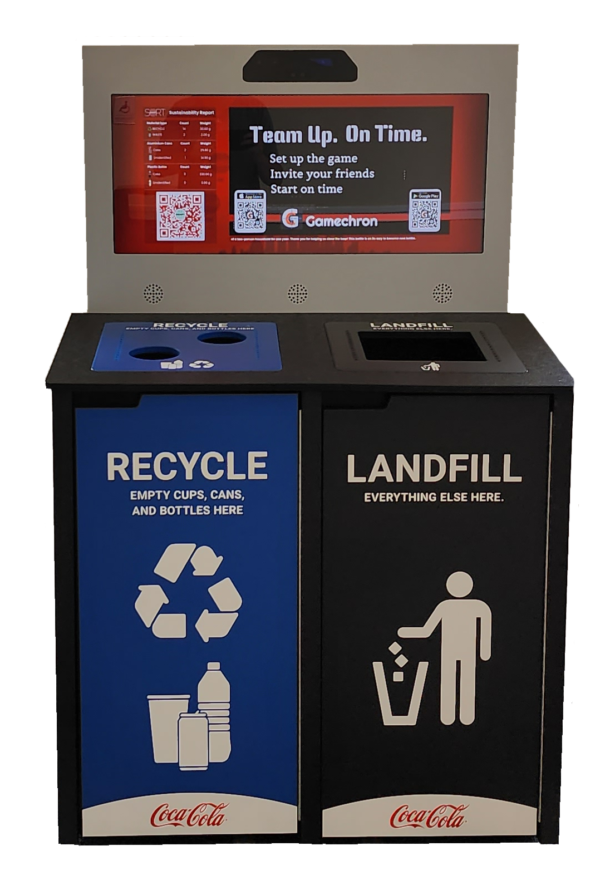In 2018 alone, there were 292.4 million tons of municipal solid waste. That’s about 4.9 lbs per person each day. Out of this, about 25 million tons were composted, and 69 million tons were recycled.
If you’re a company that produces waste, then you might wonder about smart methods for industrial waste disposal. Don’t let it pile up and feel unsure about what to do next.
This article will go over multiple methods to handle industrial waste. Read on to explore these smart strategies, and be part of the solution today!
1. Landfill
You can find out now about multiple methods, and explore different industrial waste disposal near me. One waste disposal method you can choose is a landfill.
This is where you bury items in the land. Landfill management is about going through the waste and only placing items that can’t compost or recycle. Another safe method is where there’s a reduction in odors before it’s placed.
2. Recycling
If you’re able to recycle waste disposal of industrial chemicals, this is a better method than burying it in the ground. This is where your unwanted items can turn into something wanted for another person or business.
You can become part of the solution, and help reduce the waste that sits around. There are companies that offer waste container units that you can buy to reduce your waste laying around.
3. Segregation
For companies that have construction materials such as glass, building material, waste, and plastics, use container units to separate the waste. This is because this type of material will take a while to decompose.
4. Composting
This is where waste becomes organic compounds, and can feed plants. This is the most beneficial technique since it’s using waste for good.
5. Reusing Waste
Choose reusable absorbents whenever possible. You can use kitty litter or absorbent pads to collect drips and leaks from industrial machines. Opt for absorbent reusable items instead of single-use absorbents.
Choose a laundering service for your filter bags and PPE gloves. This will cut down on waste and costs.
Encourage your employees to reuse boxes and bubble wrap whenever possible. Not just at the business, but in their daily lives as well.
Use reusable pallets to ship items. Let your suppliers know that you want them to use these to send items to you.
If your company uses wastewater, consider having your own wastewater treatment. Have a rummage sale to sell extra items such as walk mats, uniforms, etc. Afterward, you can donate the proceeds to charity.
Use reusable shop towels since they’ll help to reduce waste, improve air quality, and save energy. Even though shop towel laundering uses energy and water, it requires less than creating new rags. When you reusable towels, you’re cutting down the amount of solid waste and packaging.
6. Plasma Gasification
An environmentally friendly method is plasma gasification. This is where you use convert commodity recyclables that are extracted from municipal solid waste in landfills. They’re then turned into energy.
These carbon-based materials receive high temperatures that convert them to syngas. Syngas is a gas that can be refined into high-grade fuels or chemicals. It can also be directly combusted as well.
Non-organic material parts are converted to slag. This is solid and bound waste that you can use as a raw material in construction. If you’re looking for a zero-waste method, choose plasma gasification.
7. Incineration
You can choose to turn the combustion of waste into base components. This is where heat is trapped in order to derive energy.
Inert ash and assorted gases are common products. Pollution can be from waste combusted and incinerated or dependent on nature.
You can check pollution by using filters. This is an effective and inexpensive method to reduce waste.
The nutrient-rich ash that’s formed can be used for hydroponic solutions. You can remove toxic and hazardous materials through incineration.
This energy can then be used for heating, cooking, and supplying power to turbines. Keep in mind that you must watch it closely in order to avoid the accidental leakage of micro-level contaminants such as dioxins.
Source Reduction
Choose source reduction in order to reduce the amount of waste that your company produces. Reduce defects and excess processing.
In order to do this, you can upgrade raw materials or the supply. This is because higher quality material might mean less waste being generated.
Add quality checks in order to avoid errors, and catch them fast. This means less rework and scrap is generated.
Audit your supplier as well. Find out how they source their materials.
Speak with vendors about receiving their packaging afterward. This means that they might be able to reuse the packaging.
Reduce any unnecessary steps in production in order to improve efficiency overall. Don’t use large boxes for tiny items, and instead use bins or tubs since they’re reusable.
Ensure that your employees receive ongoing training in order to make sure that there are no delays in production. It’ll also help you keep waste down.
Also, consider tracking your output. This will let you find areas for improvement.
Incorporate well-timed deliveries with suppliers in order to have fewer packaging requirements. This will protect against aging, damage, etc. Also, consider buying new equipment that’ll produce less scrap.
Now that you’ve explored these multiple methods to handle industrial waste disposal the smart way, you should be well-equipped to reduce waste. Would you like to read more business content? Check out our other articles on our site today.




